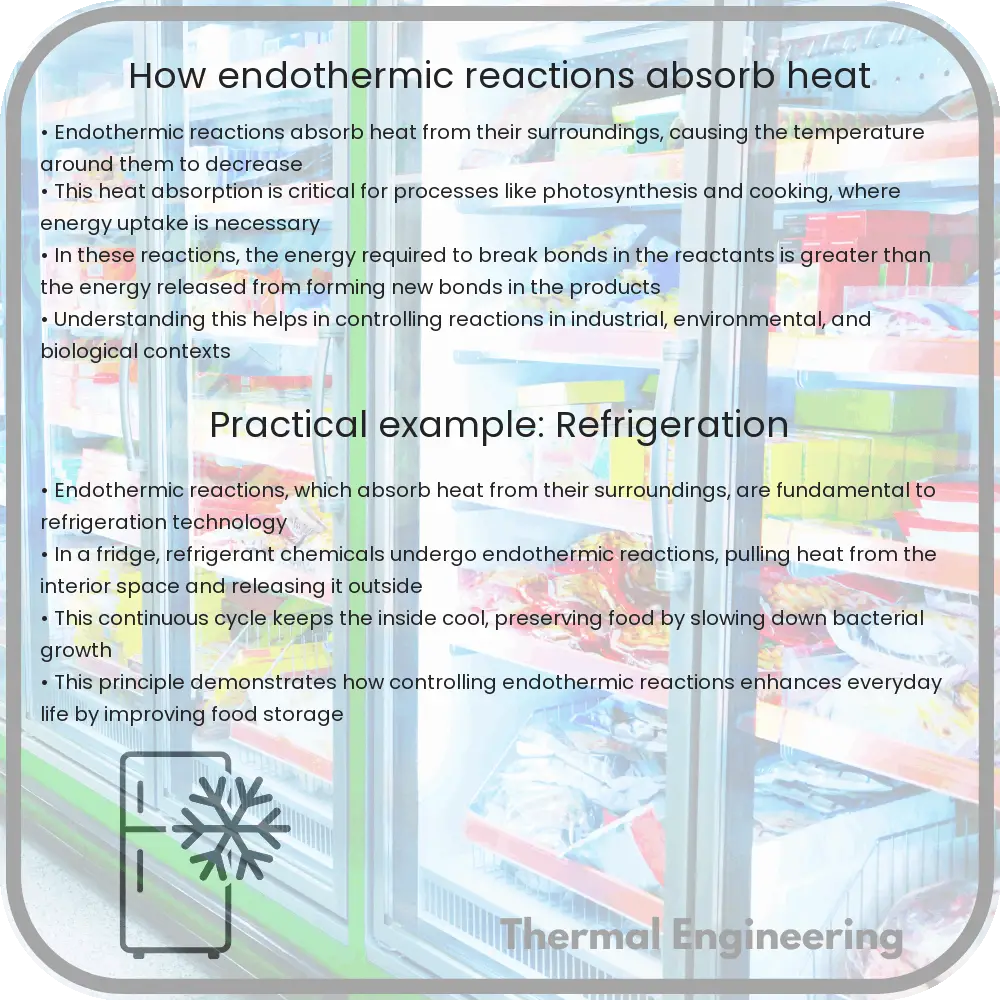Gain insight into endothermic reactions, their role in heat absorption, and their significant in chemistry and engineering applications.

Understanding Endothermic Reactions: How They Absorb Heat
Endothermic reactions are fundamental processes in chemistry and engineering, characterized by their absorption of heat from the surroundings. This phenomenon is not just a staple of academic textbooks but also a crucial component in various industrial processes and everyday phenomena.
What is an Endothermic Reaction?
An endothermic reaction is a chemical reaction that requires energy to proceed. Unlike exothermic reactions, which release energy, endothermic reactions absorb heat, resulting in a temperature decrease in their environment. This absorption of heat can be critical for various applications, such as thermal management, manufacturing, and even in culinary practices.
The Chemical Basis of Endothermic Reactions
Energy in a chemical reaction primarily involves breaking and forming bonds. Breaking chemical bonds requires an input of energy, whereas forming new bonds releases energy. In an endothermic reaction, the energy needed to break the bonds in the reactants is greater than the energy released from forming new bonds in the products. This imbalance results in the overall absorption of energy.
Common Examples of Endothermic Reactions
- Photosynthesis: Perhaps the most famous example of an endothermic process is photosynthesis. Plants absorb solar energy to convert carbon dioxide and water into glucose and oxygen. The general reaction can be represented as:
6CO2 + 6H2O + sunlight → C6H12O6 + 6O2 - Evaporation: The process of evaporation where liquid water absorbs heat and transforms into vapor is an everyday example of an endothermic reaction.
- Endothermic Decompositions: Certain compounds absorb energy to decompose into simpler molecules. For instance, potassium chlorate decomposes upon heating to form potassium chloride and oxygen, a reaction used in safety matches and fireworks.
Thermodynamics of Endothermic Reactions
In thermodynamic terms, the heat absorption in endothermic reactions is indicated by a positive change in enthalpy (∆H > 0). Enthalpy is a measurement of energy in a thermodynamic system. The positive ∆H value signifies that the products of the reaction have higher enthalpy than the reactants, indicating the requirement of heat input for the reaction to occur.
Applications of Endothermic Reactions
- Cooling Systems: Endothermic reactions are utilized in refrigeration and air conditioning systems, where they absorb heat from the environment, thereby cooling it down.
- Thermochemical Energy Storage: Endothermic reactions play a role in energy storage systems where they store heat energy, which can later be released as electrical or mechanical energy.
Conclusion
Endothermic reactions are not just theoretical concepts but have practical implications in daily life and various industrial processes. Understanding how these reactions absorb heat can help in developing more efficient energy, cooling, and heating systems. By examining and harnessing the properties of endothermic reactions, engineers and scientists continue to innovate in ways that improve technology and sustainability.